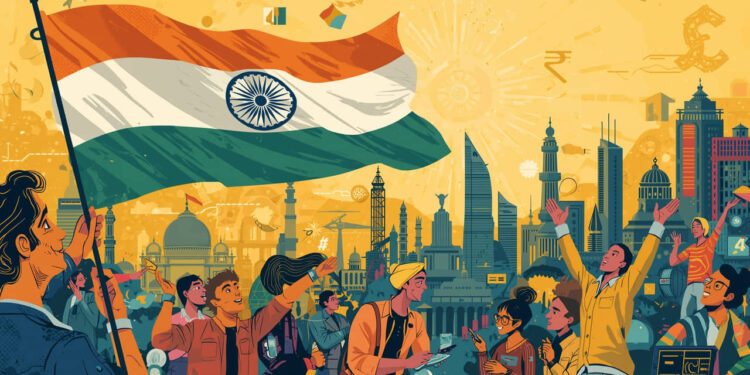Now, India is poised to become the world’s No. 3 economy; forecasts indicate the threshold will be crossed, perhaps as early as 2027 or 2028. The only thing is that India has lept frogged from tenth largest to become 4th largest, which in no time will over-take Germany as the third-largest economy of the world.”, FM had said. And this rapid economic climb is the result of high GDP growth, multiple policy reforms, infrastructure investments, and declining multidimensional poverty, with at least 25 million people pulled out of poverty in recent years.
Both the Reserve Bank of India and international bodies such as the IMF share this upbeat view and project long-term GDP growth of over 6.5 percent over the next few years, even amid global uncertainties. India’s economy, now estimated at $4 trillion, is projected to swell to $5.5 trillion by 2028 — surpassing large economies like Germany and Japan. The change mirrors India’s growing industry and service sectors, new technologies, urbanization, and increased trade with other countries. Although, as of now, India has not been recognized as a developed country, there are strategic measures for 2047 that would develop India into a Viksit Bharat (developed country).
This economic rebalancing also involves consolidating the banking system’s balance sheets, more disciplined fiscal management with internationally dedicated deficit reduction, and continued forays into structural reforms and other regulatory frameworks. India’s rise in the global economy reflects its strategic geographic location, demographic dividends, and an opportunity to significantly transform the international economic architecture over the next couple of years.
India’s Economic Growth Trajectory
It is the speed and scale of India’s ascent from being the world’s tenth-largest economy in 2014 that, so far at least, stand out even more. The country remains on solid GDP growth of around 6.5% a year, thanks to Government infrastructure investment, strong rural demand driven by good monsoon seasons, and robust domestic consumption. India’s economic fundamentals remain strong, even as global trade tensions and geopolitical issues have risen.
Key Drivers of Growth
- Policy Reforms: Changes to taxes, labor, and customs have made it easier to do business.
- Poverty Reduction: About 25 million people have been lifted out of poverty, improving the overall social and economic situation.
- Banking Sector Recovery: Public sector banks have resolved past balance sheet issues, thereby improving credit flows and stabilizing the economy.
- Service and Industrial Expansion: The growth of the IT, manufacturing, and trade sectors helps a wide range of economic activities.
Global Economic Position
As of 2025, India’s economy is worth $4 trillion and ranks fourth globally. By 2027–2028, it is expected to surpass Germany and become the third-largest economy. The U.S. and China are still the world’s two largest economies. India’s rise is making it more critical to the world’s geopolitics and strategy.
Future Outlook
The Government aims for the economy to reach $30 trillion by 2047, when India will be a developed country. The way forward includes faster GDP growth, structural changes, capital investments, the adoption of new technologies, and improvements in human capital.
This change marks India’s rise as a significant global economic power, which will lead to better living standards, more investment opportunities, and more power in global economic governance in the near future.


